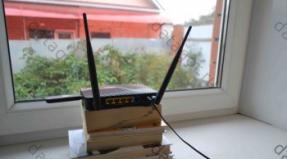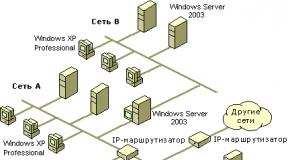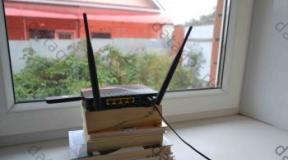Hydrostroy company Sakhalin. Association of Fishery Enterprises of the Sakhalin Region
The fishing company CJSC Sakhalin Island, associated with JSC Gidrostroy, buys PJSC Preobrazhenskaya Trawling Fleet Base (PBTF) for $430 million from the family of Sakhalin Region Governor Oleg Kozhemyako, 61-year-old ex-senator from Sakhalin and billionaire Alexander Verkhovsky. PBTF is one of the largest fishing companies in the region. Its acquisition will allow Gidrostroy to take second place in terms of the volume of biological resources caught in Russia after the industry leader - the Norebo group of companies. According to PROVED sources, influential businessmen Arkady and Boris Rotenberg (childhood friends of President Vladimir Putin) may be involved in the deal.
PJSC "PBTF" is located in the village of Preobrazhenie, Primorsky Territory, east of Nakhodka. The base has ten fishing and transport vessels at its disposal. The PBTF quota for catching biological resources in 2018 is 125.1 thousand tons, which puts the company in 7th place among Russian fishing companies in terms of quota volume. The company's annual turnover is about 7 billion rubles, and its net profit is 1 billion rubles.
The main owners of the PJSC are Irina Gerasimenko and Olga Kravchenko (82.05%), who, according to PROVED sources, are respectively the wife and sister of the current governor of the Sakhalin region Oleg Kozhemyako. Another 11.089% belongs to the governor’s son Nikita Kozhemyako. In total, family members of the head of the region control 93.14% of the company's shares.
Experts estimate the total stake of the Kozhemyako family at $400-430 million. PBTF General Director Sergei Eremeev said that negotiations are still ongoing, and it is too early to talk about the amount of the transaction.
The nominal buyer of PBTF, according to PROVED interlocutors, will be the South Sakhalin-based JSC Sakhalin Island with an annual turnover of about 4 billion rubles and a net profit of 1.3 billion rubles. This company is associated with the Gidrostroy holding of billionaire and former senator Alexander Verkhovsky. The connection can be traced through General Director Vasily Velmeskin. In 2010-2014, he headed Trans Flot Gidrostroy LLC, owned by the parent company of the holding JSC Gidrostroy. Today, Velmeskin, in addition to Sakhalin Island, heads the Sakhalinrybaksoyuz Production Association LLC, which is part of the holding.
Alexander Verkhovsky's holding, in addition to fishing and fish processing companies, includes construction organizations and the Iturup bank. The holding's fish division produces up to 200 thousand tons of products per year. It has 43 vessels at its disposal for fishing, processing and transporting fish.
Leningrad native Alexander Verkhovsky began creating his financial and industrial empire in 1991 after leaving the Soviet army, where he worked as a military builder. In 2012, Verkhovsky became a senator from the Sakhalin region in the upper house of parliament; in 2017, he resigned. At the end of 2016, the Sakhalin fishing industry declared income in the amount of 135 million rubles. At that time, Alexander Verkhovsky owned two plots of land with residential buildings: in Russia (with an area of 1830 sq. m.) and in Italy (2630 sq. m.) - and three apartments with an area of 369.6 sq. m. m; 225.1 sq. m; 123.8 sq. m. The senator's family also owned two SUVs: Lexus LX570 and Lexus GX 470.
The absorption of PBTF will allow Gidrostroy to come close in terms of quotas to the second company in the industry - RRPK (340 thousand tons of quotas) of Gleb Frank, the son of Sovcomflot head Sergei Frank.
True, there is one nuance: the main resource of the PBTF is pollock fishing quotas, and the world market for its consumption has stagnated in recent years. Prices for all main types of pollock products in 2017 dropped to historical lows over the past 15-20 years, as noted earlier by the head of the Association of Pollock Harvesters, Alexey Buglak.
Pollock exports from Russia have been steadily falling in recent years: from $925 million in 2015 to $770 million in 2017. However, pollock remains the main type of fish exported from Russia: since the beginning of the year, it has accounted for 61% of all frozen fish exported from the Russian Federation. According to the Federal Customs Service, the bulk of frozen pollock (84%) is exported to China, in second place - South Korea (13,8%).
Several PROVED interlocutors noted that the brothers Boris and Arkady Rotenberg, who may subsequently become the actual owners of PBTF, may be related to the deal. A representative of the Rotenbergs assured PROVED that the businessmen have nothing to do with the fishing business in the Far East and do not intend to invest in it.
According to Sakh.com, negotiations between Gidrostroy and PBTF on a merger have been ongoing for more than a year. The companies do not comment on the progress of the negotiations, without denying their fact.
In the Sakhalin region, the formation of the Kuril Islands priority development territory (ADT) is underway. The resolution on its creation was signed at the end of August, and the TOP profile was designated - deep processing of fish and other aquatic biological resources. Preferences for residents are also outlined: customs and tax benefits (by 2026 their volume will reach 2.2 billion rubles), assistance in creating infrastructure. The result should be the creation of 700 new jobs, 5.8 billion rubles in taxes over the same period - until 2026, strengthening of Russian-Japanese economic (and, as a consequence, political) ties and, of course, a tenfold increase in the output of fish products.
At the same time, it was initially emphasized that the ASEZ was created for a specific project of a specific enterprise. The decision to form the Kuriles ASEZ was made after an appeal from the management of the Ostrovnoy fish processing plant. The same one who “became famous” throughout the country after last year’s direct line with the president, when his employees complained about monstrous salary delays. A year passed in attempts to rectify the situation, find and punish those responsible, and most importantly, to revive the once thriving industry, the city-forming enterprise of Shikotan.
A solution was found: the Ostrovnoy plant, as an anchor resident of the Kuriles ASEZ, is ready to begin construction of a complex for the production of frozen and chilled fish products and canned food. Investments in the project - 7.4 billion rubles, jobs - 700. A canning plant, a building for a fish-meal plant line, a freezing warehouse for 15 thousand tons will be ready, according to the project, by 2018, two robotic freezing plants and a plant for deep processing of cod and salmon fish species – by 2020.
However, it recently became known that in Shikotan a similar fish processing complex is already being created by the largest player in the industry, which has not had and does not have problems similar to those of Ostrovny - the Gidrostroy group of companies.
Plans for the Ostrovny plant were last clearly announced in the summer. And in the TV report that aired on the state TV channel a few days ago, they are not mentioned at all. But a lot is said about the plans of Gidrostroy: here is a story about recently purchased modern ships, and about the ongoing construction of a fish processing megacluster, and about the creation of energy infrastructure, and about the intention to “feed sardines to Iwasi not only Russia, but also China, and even African countries "
It turns out that Gidrostroy ousted Ostrovnoy from the project? Or will two large-scale enterprises of the same profile be able to coexist and compete on one small island? Or maybe the two companies merged on terms that suited both parties?
NOT COMPETITORS
Vladimir Bocharnikov, General Director of CJSC Kurilsky Fisherman (part of the structure of the Gidrostroy Group of Companies), when asked whether the company uses Ostrovny’s facilities to implement its project and whether the companies are somehow connected with each other, answers unequivocally: no. Let us note that both the management and the new investor of Ostrovny have no relation to Gidrostroy (in the spring of 2016, the Sakhalin company Kuril Universal Complex LLC became the investor of the former. - Note EastRussia).
– Gidrostroy launched its plant in Shikotan back in 2003. It was our third: before it, two fish processing complexes were built on Iturup - “Yasny” and “Reidovo”, and the “Collective Farm named after Kirov” complex, in the Korsakovsky district, became part of “Gidrostroy” in 2009,” says EastRussia Vladimir Bocharnikov. – So we have had a base on Shikotan for a long time: the plant itself, refrigerators, dormitories for workers. We built our own pier here. At the beginning of autumn, Norwegian ships came to us - fishing trawlers purchased by Gidrostroy: Torlend and Toron. In short, we are not talking about starting a project from scratch, but about re-equipping and updating.
As Bocharnikov says, now the entire management of Gidrostroy, in his words, “in full force” has left for Iceland: they are adopting the experience of operating a similar fish processing complex, studying new equipment that the Sakhalin company purchased from their Icelandic colleagues.
– We have already installed the Icelandic processing line; it was installed in less than two weeks. We are waiting for other automated equipment for sorting and stacking. The plant will specialize in frozen products from sardines and pollock. Its productivity will be 1,000 tons per day,” says Bocharnikov. – We will launch the new plant approximately by June 2018. I cannot say that many jobs will be created there: due to the high degree of automation of production, there cannot be many of them.
Gidrostroy says: the main thing the state could help the company with is energy infrastructure. According to calculations, the power consumed by the plant will be 6 megawatts, and in Shikotan the energy supply is tight. What about TOR? Surely they should help residents with the creation of the necessary infrastructure? But Gidrostroy is not its resident. And it seems like he’s not even going to.
– At the moment, only one application has been submitted for participation in the Kuriles ASEZ, for 7.4 billion rubles - this is the application of the Ostrovnoy fish processing plant. It is under consideration,” Evgenia Vasilyeva, official representative of the Ministry for the Development of the Far East, told EastRussia.
Consideration of this application has been ongoing since the beginning of July (it was submitted before the signing of the resolution on the creation of the ASEZ). The application has not even been approved yet. And Gidrostroy is already working hard, without waiting for signals or permits.
Will the Ostrovny project receive approval under the current conditions? Moreover, taking into account the fact that in terms of capabilities and technological equipment, the plant was initially significantly inferior to Gidrostroy (for example, Ostrovny does not have its own fleet, and other companies “shared” raw materials with it). The questions are perhaps rhetorical.
We can say that Gidrostroy has conquered another territory. The company, in particular, is actively involved in the extraction and processing of Ivasi sardines, which now, for the first time in a long time, have reached the Kuril shores. According to scientists, in the next 5 years it will be possible to extract 4 million tons of it per year. And this is comparable to the volume of all aquatic biological resources produced in Russia.
BOTH FISHERMANS AND CONSTRUCTIONS
Actually, this has always distinguished the Gidrostroy company - the ability to quickly navigate in any situation.
The company began as a construction company back in the 1990s. He didn’t give up working in this area, but then, in the 90s, he also got involved in the fishing industry. So now it is both the largest fishing holding in Russia and one of the key construction companies for the Sakhalin region.
In addition to a dozen enterprises related to the fishing industry (and the company has always built and maintained them itself), Gidrostroy has built schools, hospitals, kindergartens on the islands, a geothermal power plant with an access road of 22 km, 6 bridges; 12 km of roads; about 20 residential buildings, engineering facilities, the Yasny airport on Iturup, a cultural and sports center in Kurilsk, there is also a fire department, residential complexes for seasonal workers. Gidrostroy's own fleet is about 40 vessels.
“All cargo and passenger sea transportation on Iturup is serviced by the loading and unloading department of the Gidrostroy Group of Companies. 40–45 thousand tons of various cargo are transported per year. This meets the needs of the company itself, municipal enterprises, the population, as well as facilities being built as part of the Kuril program,” notes the official website of the group of companies.
Gidrostroy says that the enterprises included in the Group of Companies are city-forming for at least four settlements in the Sakhalin region, and provide employment (including seasonal workers) to more than 6,000 people. This, by the way, is more than the entire population of Iturup.
The founder of the Gidrostroy Group of Companies, Alexander Verkhovsky, once noted that the company is the main executor of the federal target program"Socio-economic development of the Kuril Islands." It’s hard to disagree with this; all that remains is to add that one of the key taxpayers of the Sakhalin region is too.
PHILOSOPHICAL APPROACH
At the same time, it is impossible to say that Gidrostroy’s reputation in the region is absolutely impeccable. From time to time, the company is associated with various kinds of scandals and proceedings.
In 2013, for example, residents of the village of Ozersky wrote an appeal to President Vladimir Putin and the regional prosecutor’s office, complaining that Gidrostroy did not hire locals, leaving them without a livelihood, but hired guest workers. The company's management was also blamed for the general collapse of the village. Allegedly, people were promised, when “Gidrostroy” came to Ozersky, in exchange for shares of the fish collective farm named after Kirov (by that time practically bankrupt) to improve their lives in locality, but they deceived me, and it only got worse.
At various times, enterprises included in Gidrostroy were accused of illegally obtaining tax benefits (we are talking about tens of millions of rubles) and of failing to fulfill construction contracts on time.
But for Gidrostroy, all these cases, by and large, had no consequences. After the statement from Ozersky, searches were carried out in the offices of the holding’s management (apparently, the investigators did not find what they were interested in). But in the end, the residents of the village received an answer from the regional government in the spirit that, they say, the employer can be understood: Russian workers abuse alcohol, demand unreasonably high salaries, work poorly, not like qualified and hardworking foreigners.
And this answer perfectly illustrates the attitude towards the company in the region as a whole: everything is not without its shortcomings, and it is impossible to conduct a business without a single mistake. But if a business “carries” on itself something that neither the regional nor sometimes the federal authorities can handle, it is worth turning a blind eye to some “minor mistakes” for the common good.
It’s too early to predict, but there is a high probability that something similar will happen with the Kuriles ASEZ. While everyone is waiting and discussing, the giant company is working hard, creating a production facility that has few analogues in the world. And he does it for his own money.
By the way, not everything in the idea of the Kuriles ASEZ was satisfactory for the Sakhalin residents. In particular, many were bewildered by the intention to actively attract large Japanese investors to the new ASEZ “for joint development” of projects. It is clear that those who were dissatisfied with this prospect were guided by political rather than economic considerations (we are talking about the disputes around the Kuril Islands). But in September, the South Kuril Development Association (SKAR) was created in the region, which developed proposals for the development of entrepreneurship in Shikotan and Kunashir without the participation of the Japanese side. And here everything also froze at the level of intentions.
While South Korea, the regional government and federal authorities were looking for an opportunity to “meet and talk,” Gidrostroy advanced a few more steps in its project, essentially closing the way there for those foreign investors who are not yet very interesting to this company. That is, business also makes big politics on the islands.
One of the EastRussia sources who commented on the situation around the Kuriles priority development area drew attention to the strong political aspect in the issue of creating and developing this priority development area. So, despite the fact that statements about the creation of a priority development area in the Southern Kuril Islands from the Russian Ministry of Eastern Development have been made since 2015, directly legal registration The creation of a new economic zone happened in an accelerated manner - literally within two months. “There is a feeling that this was done as a way to strengthen national negotiating positions on the eve of the meeting of the leaders of Russia and Japan at the WEF,” the expert noted.
This logic explains, in particular, the rhetoric around the new TOP. The Russian side will wait two months for proposals from Japan to participate in the priority development territory (ASEZ) Kuril Islands, and then begin to look for investors for it in Russia and other countries, Deputy Prime Minister of the Russian Federation and Presidential Plenipotentiary Representative in the Far Eastern Federal District Yuri Trutnev told reporters on September 7 . This “ultimatum” expires soon - November 7, and so far no initiatives from the Japanese side have been publicly announced. Moreover, in the Register of ASEZ residents, published on the website of the Far East Development Corporation, there are, in principle, no residents of the Kuril ASEZ.
“We respect the proposals of our Japanese colleagues for the joint development of the Kuril Islands, but we would like to see these proposals on paper,” they were quoted as saying in September news agencies Yuri Trutnev.
Previously, EastRussia wrote about the rhetoric of Japanese media in response to " The basis of the argument of almost all newspapers was the thesis that the creation of this economic zone runs counter to previously reached agreements on the search for forms of joint management on the islands, since it implies exclusively Russian jurisdiction. This means, the press wrote, that the initiative should be ignored by the Japanese government.
Group of companies "Gidrostroy" - CJSC Pilenga, CJSC Sakhalin Island, CJSC Kuril Fisherman, LLC PA Sakhalinrybaksoyuz, LLC Poronay, LLC Bug Company LLC RK im. Kirov" are business entities engaged in the extraction (catch) of aquatic biological resources, acceptance, processing of catches, production, transportation, storage of fish and other products on fleet vessels and coastal enterprises, as well as artificial reproduction of Pacific salmon (hereinafter referred to as the Group of Companies).
To carry out the declared activities, the Group of Companies has:
Quotas for production (catch) of aquatic biological resources in the total allowable catches (TAC) for industrial and (or) coastal fisheries in 2018, in the amount of 275 thousand tons;
19 fishing vessels (excluding small fleet) with a maximum total daily catch of 4.4 thousand tons, production of frozen products (including fillets) of 2 thousand tons, fishmeal of 160 tons;
10 transport vessels with a total deadweight of 46.5 thousand tons, including 8 refrigerated vessels - 45.4 thousand tons;
4 coastal fish processing complexes - “Yasny” (Kitovoe village) and “Reydovo” (Reidovo village), located in the Kuril region (Iturup island), “Krabozavodsk” (Krabozavodskoye village), located in the Yuzhno-Kuril region ( . Shikotan), "RK im. Kirova" (Ozerskoye village), located in the Korsakov region (Sakhalin Island), with a total daily capacity for receiving raw materials for processing of up to 1.5 thousand tons, which (among other things) include 6 industrial refrigerators, with a total capacity simultaneous storage of 13.5 thousand tons, including 3 on the island. Iturup (6 thousand tons), 1 on the island. Shikotan (2 thousand tons), 2 on the island. Sakhalin (5.5 thousand tons). An investment project for the construction of another fish processing plant in the village is currently under implementation. Krabozavodskoe (Shikotan Island) with a raw material processing capacity of up to 500 tons. per day with an industrial refrigerator with a one-time storage capacity of 4 thousand tons;
46 fishing grounds (FPU) for industrial and coastal fishing, located on the islands of Iturup (17), Kunashir (1), Sakhalin (28), with a total potential for annual catch of Pacific salmon - up to 50 thousand tons;
13 salmon hatcheries, including 10 on the island. Iturup, 3 - on the island. Sakhalin, with a total production capacity for the production of Pacific salmon fingerlings in the amount of 411 million pieces. In addition to these, several more hatcheries of the Group of Companies are at various stages of design or construction.
In 2017, the total volume of production (catch) of aquatic biological resources (including objects and areas for which and where the TAC is not established) by the Group of Companies amounted to 332 thousand tons, including pollock 250 thousand tons, Pacific salmon - 17 thousand tons, production of commercial food fish products - 236 thousand tons.
The ships and onshore enterprises of the Group of Companies operate an in-house control system based on the principles of HACCP (Hazard Analisis Crictal Control Point).
Salmon fishing of the Group of Companies, carried out at the main control points of the island. Iturup, has an international certificate from the Marine Stewardship Council (MSC), confirming compliance with standards for ensuring sustainable and rational fishing, as well as the legality and legality of products from the moment of extraction (catch) of raw materials to sale to the end consumer.



















